Potato Sandwich Bread
A classic sandwich bread, made with mashed potato for extra flavour & a light, tender crumb. This stuff makes the best sandwiches!
This post contains affiliate links.
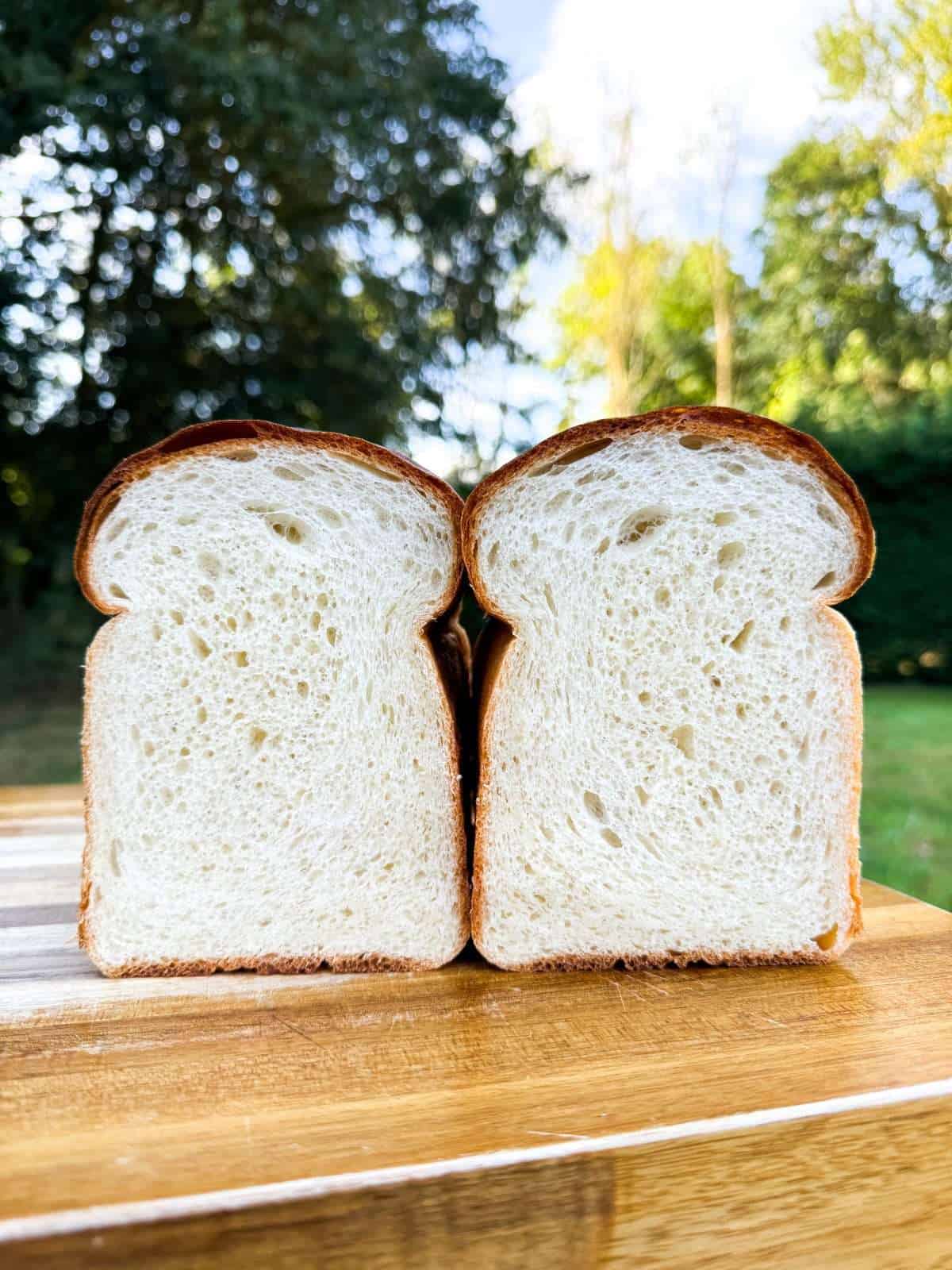
This fluffy loaf of white bread makes the best sandwiches ever!
I’ve been developing my sandwich bread recipe for a while now and I’ve finally perfected it! The secret to the lightest, most flavoursome loaf of bread? Potato! More specifically, adding mashed potato into the dough, as well as some of the water we cooked the potato in.
The great thing about making dough with mashed potato is that thanks to the added starch, the crumb of your baked bread will be softer, lighter & even more tender. Yet it’s still robust enough to hold pretty much any sandwich filling. Plus, it makes fantastic toast!
Check out our ever growing collection of bread recipes for more inspiration! There’s loads to choose from! Including pizza doughs, burger buns, doughnuts, focaccia.
What You’ll Need
- Potatoes – You’ll need to use a floury variety of potato for this bread. I like Maris Pipers!
- Bread Flour – Make sure to use a strong white bread flour with a protein content of 13-15% for this bread recipe. I use a Canadian bread flour from Shipton Mill.
- Milk – Whole milk works best for this bread dough but semi skimmed will work as well.
- Yeast – I’d recommend using dried active yeast for this recipe but instant will also work.
- Salt – A good quality, fine sea salt works best for bread. I like to use Maldon salt.
- Sugar – A small amount of caster sugar adds flavour to the bread.
- Milk Powder – Adding milk powder to bread dough gives it a more tender crumb & improves the colour of the bread once it has baked. Semi skimmed or whole milk powder will work here.
- Egg – You’ll need a large egg for this loaf of bread. This should weigh around 65 grams in the shell.
- Butter – Make sure to use unsalted butter, to avoid making the dough too salty. The butter should be softened at room temperature before being added to the dough. This enriches our dough, improving the texture & flavour.
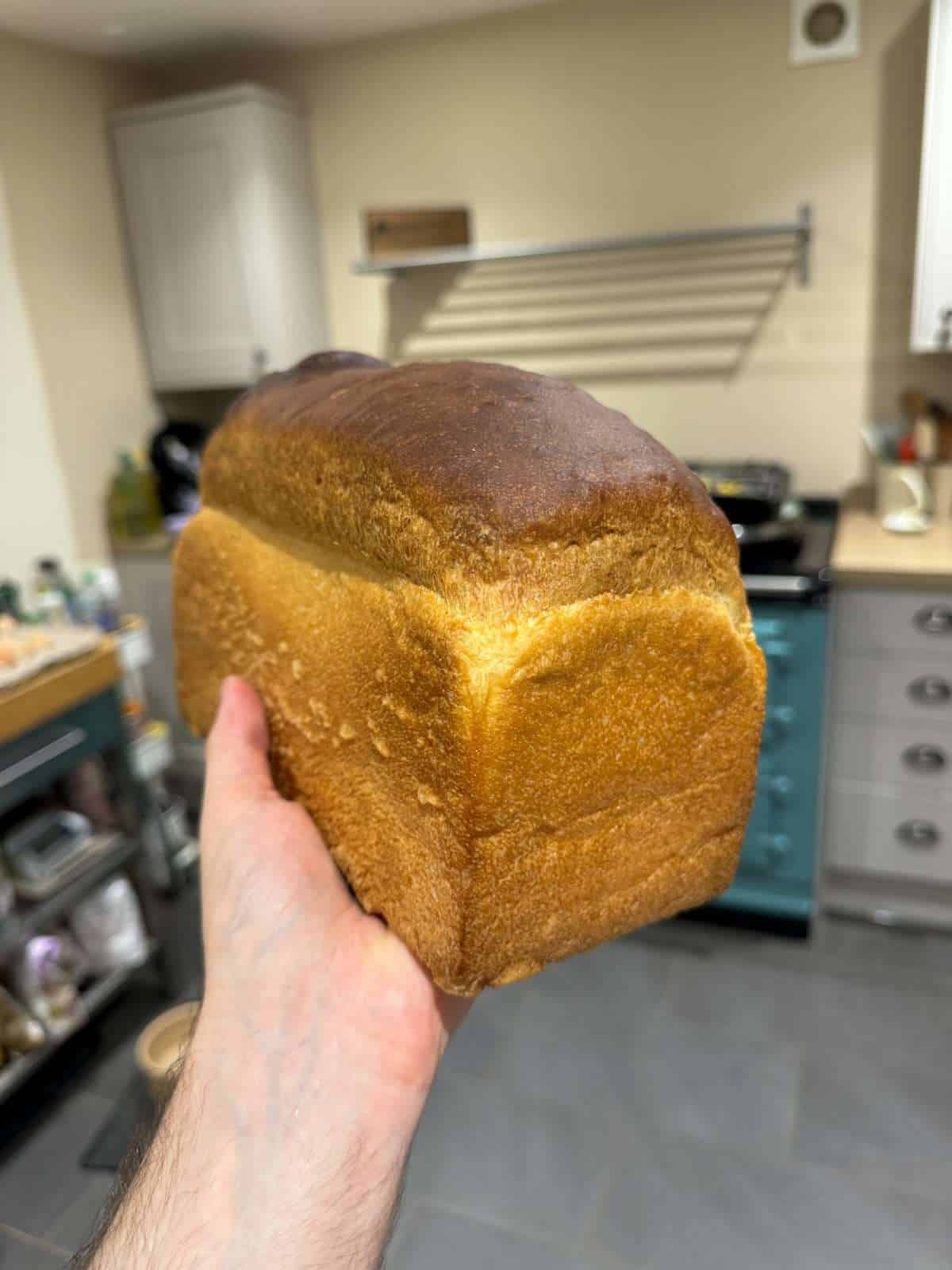
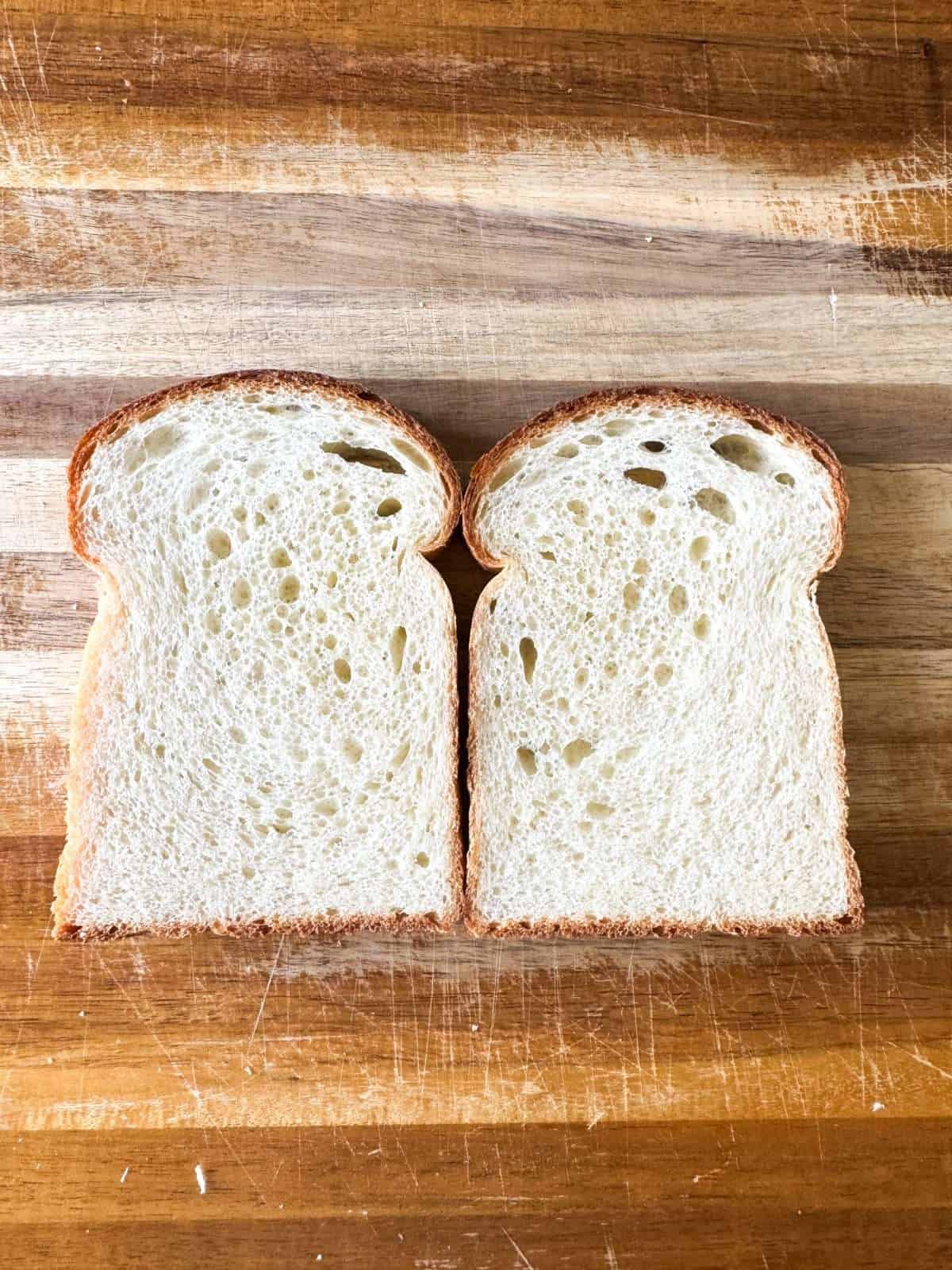
How To Make Potato Sandwich Bread
The full, printable recipe card for this sandwich loaf can be found at the bottom of this post! Here’s a quick rundown of the recipe…
- Cooking The Potatoes
First, we peel a large potato, cut into chunks then boil in water until tender. Once cooked, we set 100 grams of the potato cooking water aside then drain the potatoes through a colander, leaving them to steam dry for a couple of minutes. - Mashed Potato
Next, we mash the cooked potatoes with a potato ricer then leave them to cool to room temperature. - Activating The Yeast
To activate the yeast, we place the potato water & milk into a jug then warm in a microwave to 38°c/100°f. Next, we whisk in dried active yeast & leave it for 5-10 minutes to go frothy. - Mixing The Dough
To make the dough, we place bread flour into the bowl of a stand mixer along with sea salt, sugar, milk powder, an egg, the cooled potato & the activated yeast. Once well combined, we mix in softened butter then continue kneading until the dough passes the windowpane test (more on this below!). - 1st Rise
Next, we let the dough prove at room temperature until it has doubled in size. This will take around 45 minutes – 1 hour, depending on how warm your kitchen is. - Shaping
Once risen, we knock the back, tip it out onto a lightly floured surface then shape into a tight sausage that is the same length as the tin (more on this below!). - 2nd Rise
Now we let the dough rise until it reaches the top of the tin. This will take another 45 minutes – 1½ hours. The dough should rise just above the top of the tin… - Baking
Once risen again, we bake the bread at 175°c/350°f for 40-45 minutes until it is well risen & a deep, golden brown colour on top. - Leave To Cool
When are bread is baked, we let it cool in the tin for 20 minutes then transfer to a cooling rack, to cool completely.
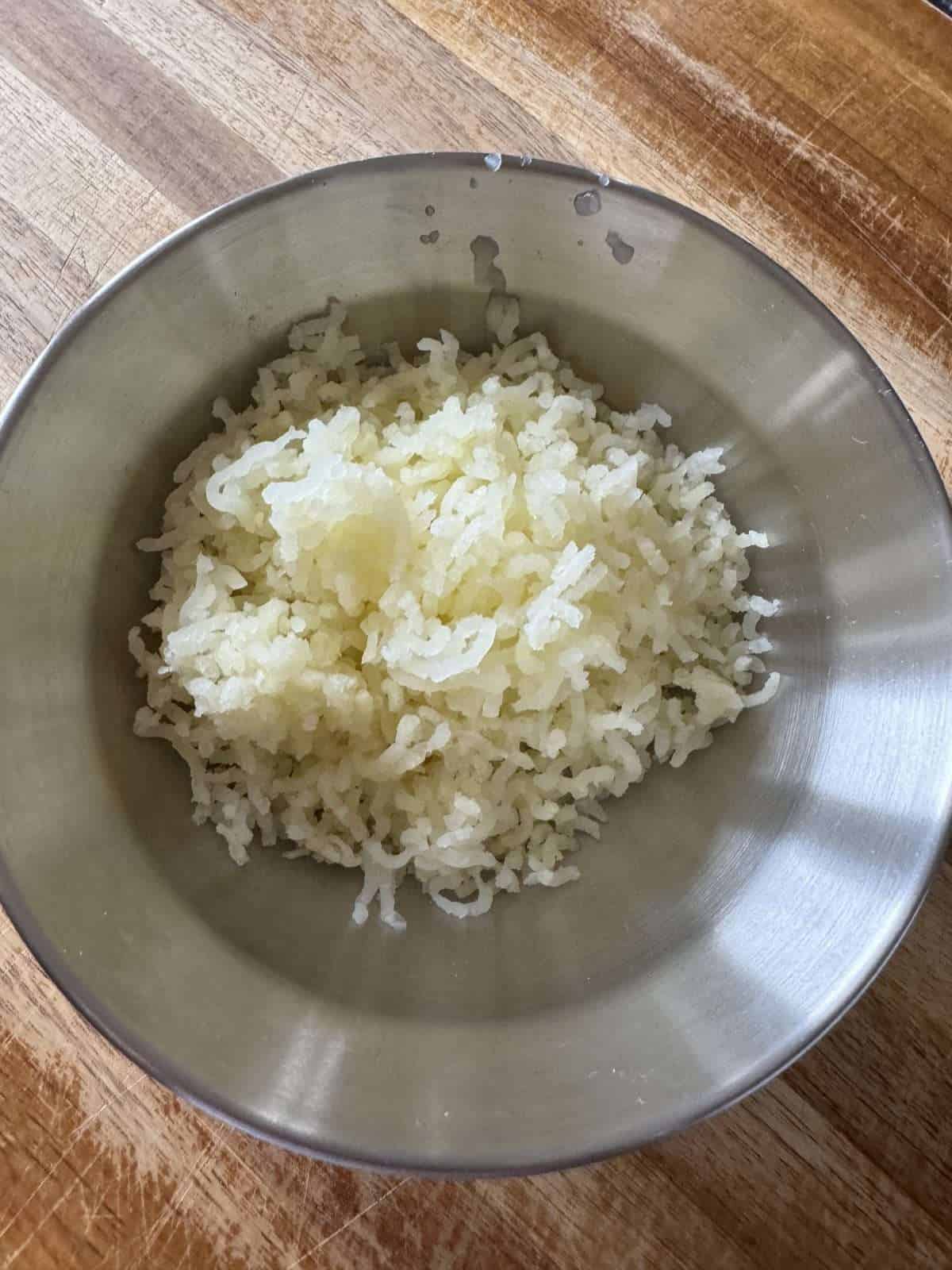
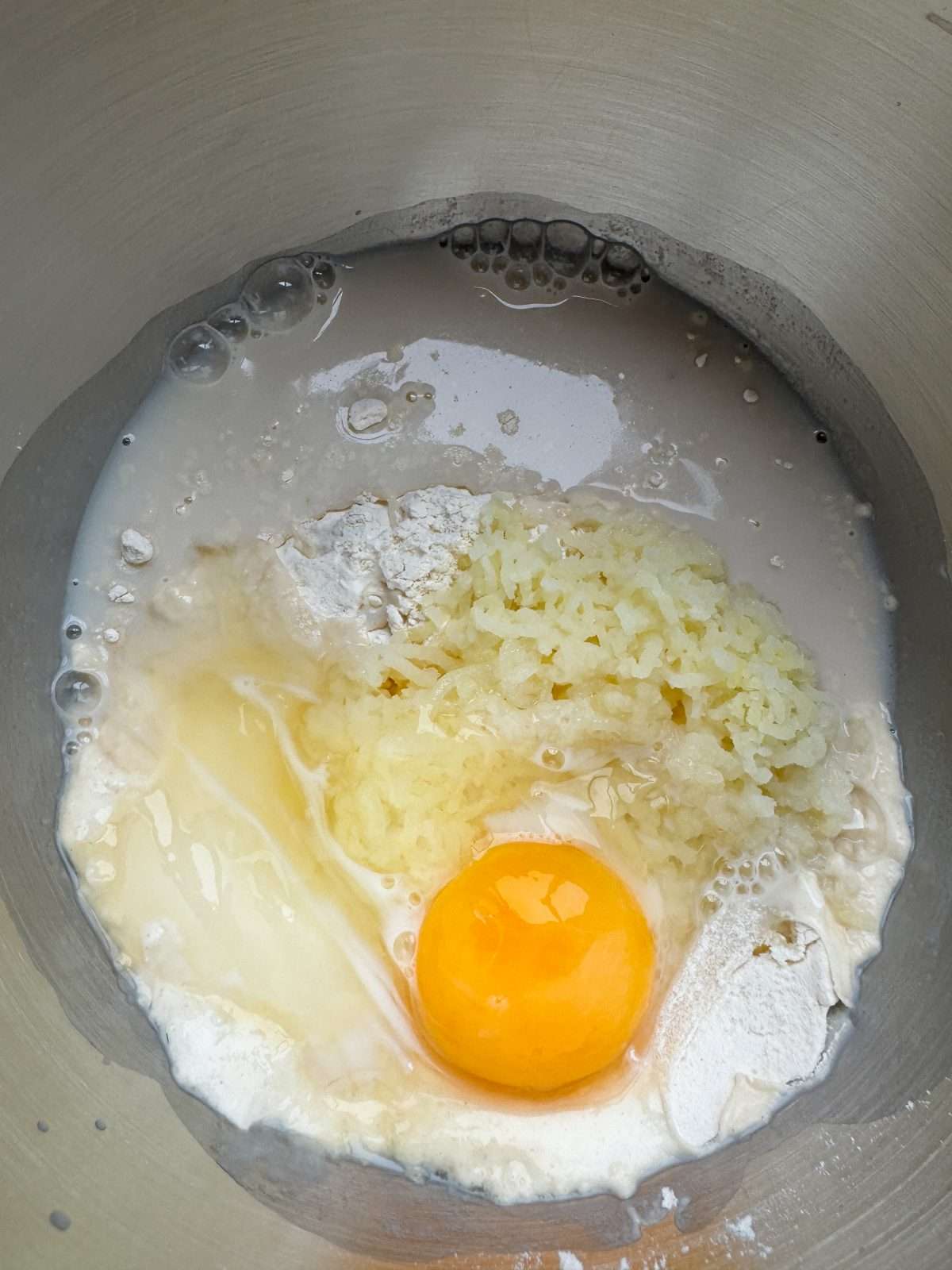
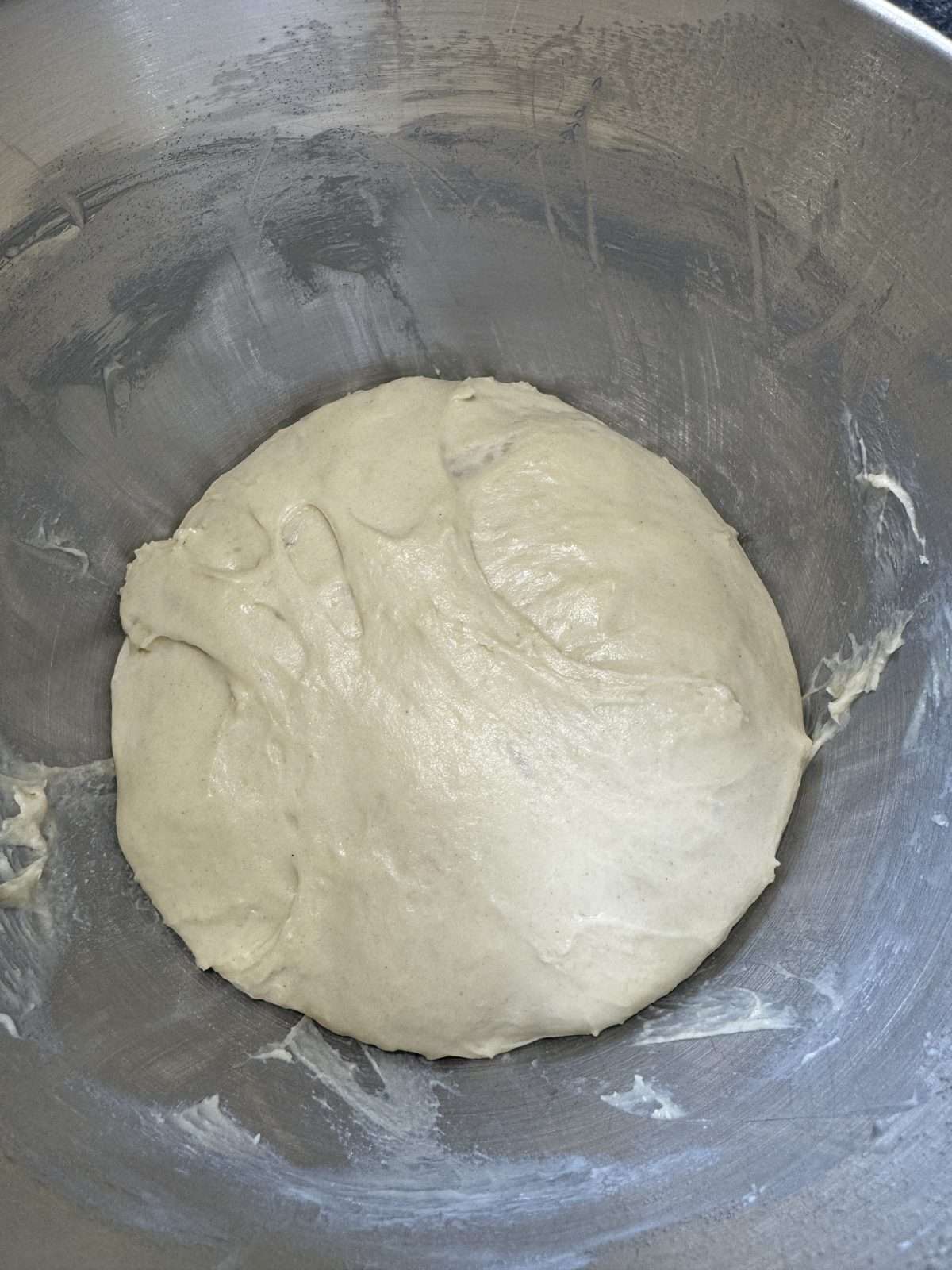
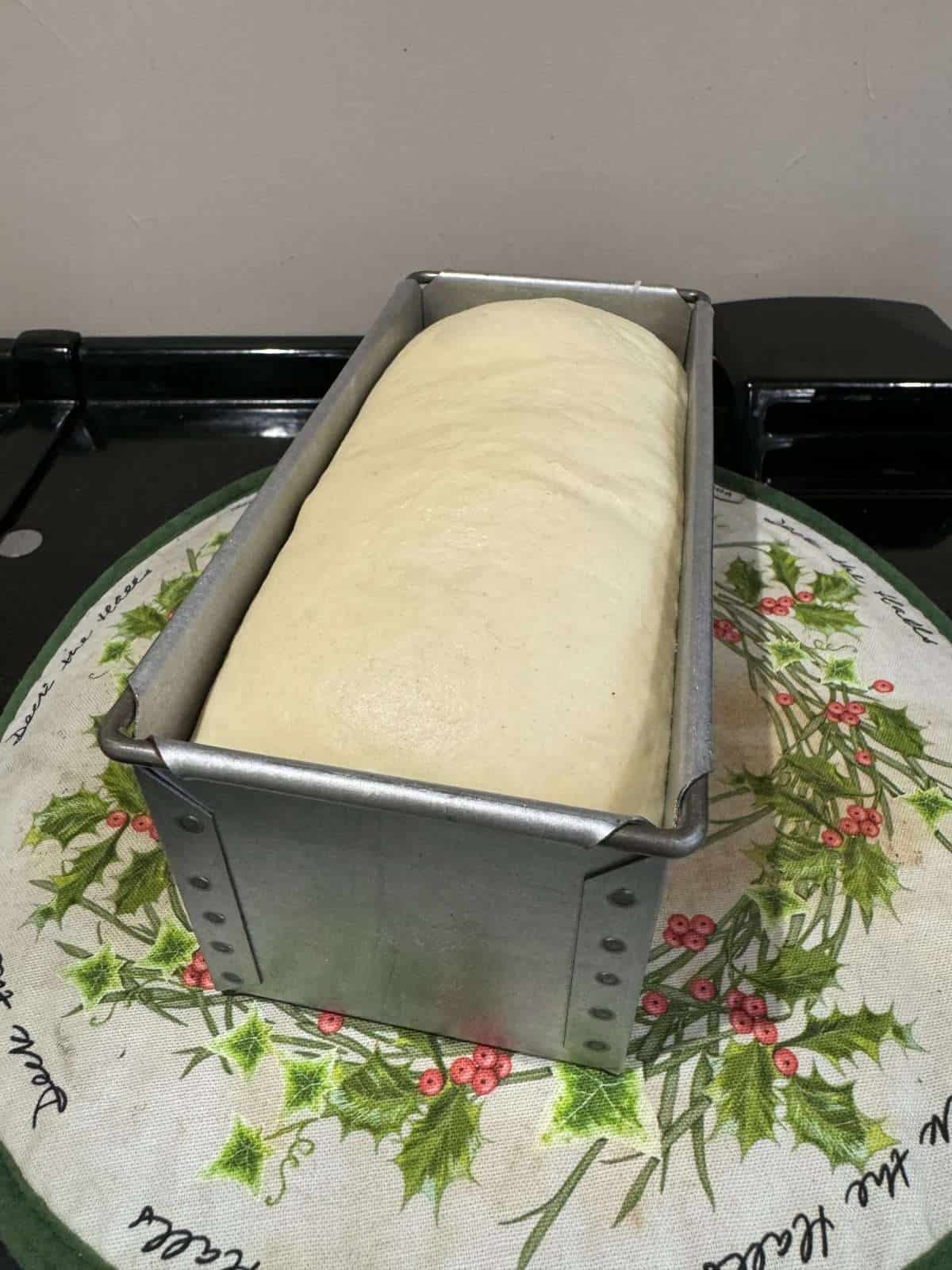
The Windowpane Test
The best way to assess the gluten development in your dough is by using the windowpane test. Here, you take a small piece of dough & stretch it between your fingers. If it stretches thin enough so that you are able to see through it, enough gluten has been developed. If it tears, more kneading is required.
How To Shape Dough For A Loaf Tin
Shaping bread dough to fit inside a loaf tin is surprisingly easy! The key here is to roll the dough into a tight sausage that is the same length as your loaf tin (9″ in this case). Once rolled, we place the dough into the tin, seam side down then gently press it down with our fingertips, to promote even rising.
A Step By Step Guide To Shaping A Tin Loaf
Before shaping your dough you’ll need to grease your loaf tin with butter, oil or a food safe spray grease. For this recipe we’re using a tin that is 9″x4″x4″.
- Knock your dough back then tip it out onto a lightly floured work surface.
- Using your fingers, press the dough out into a 1″ thick rectangle that is 9″ wide & 12″ long.
- Start at the shortest end closest to you, roll the dough up into a tight sausage.
- Tuck each end of the dough underneath itself then place into the greased tin, seam side down.
- Gently press the dough down with your fingertips (this makes the dough rise evenly!), loosely cover the tin with clingfilm then leave to prove at room temperature until it reaches the top of the tin.
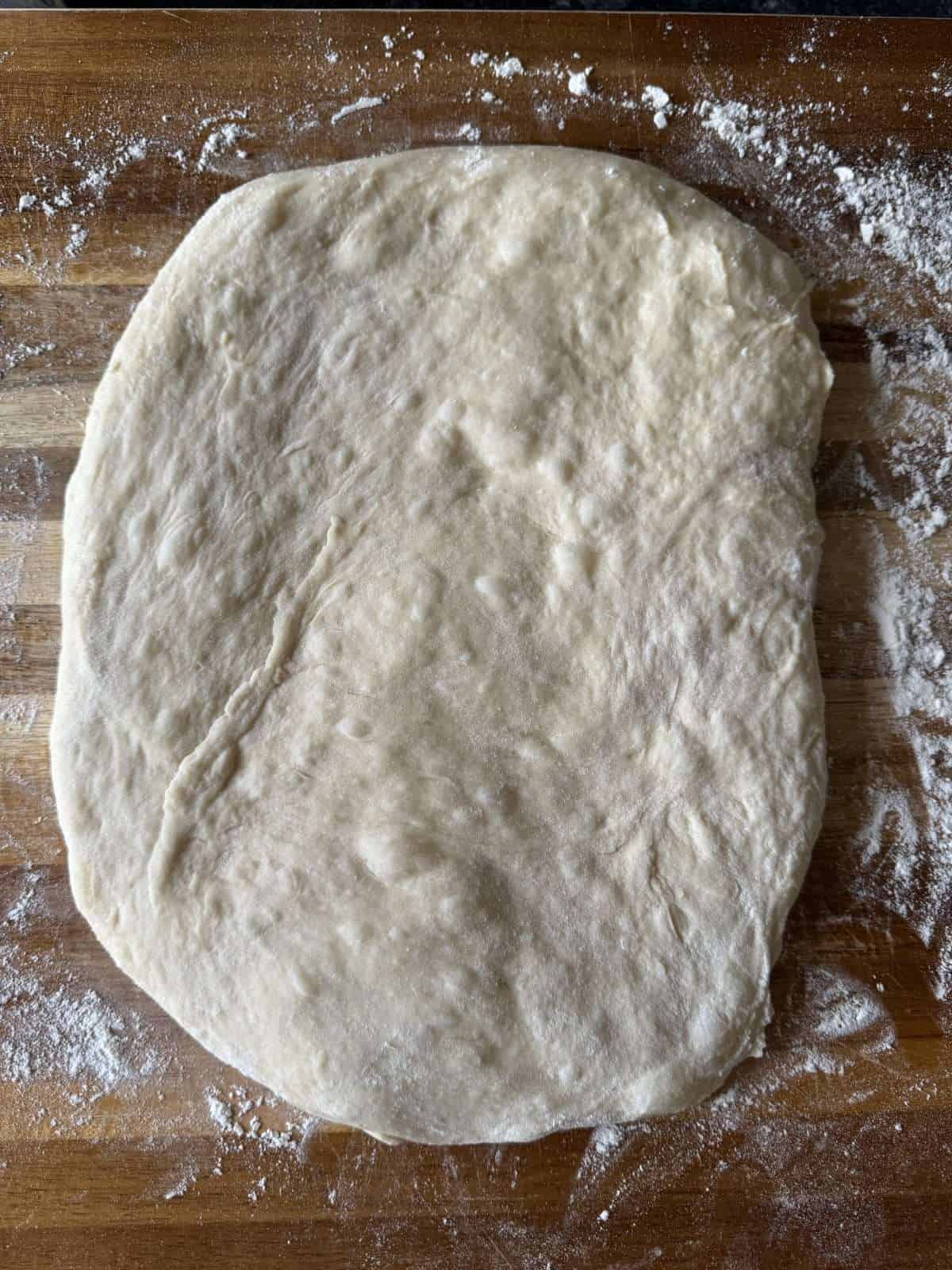
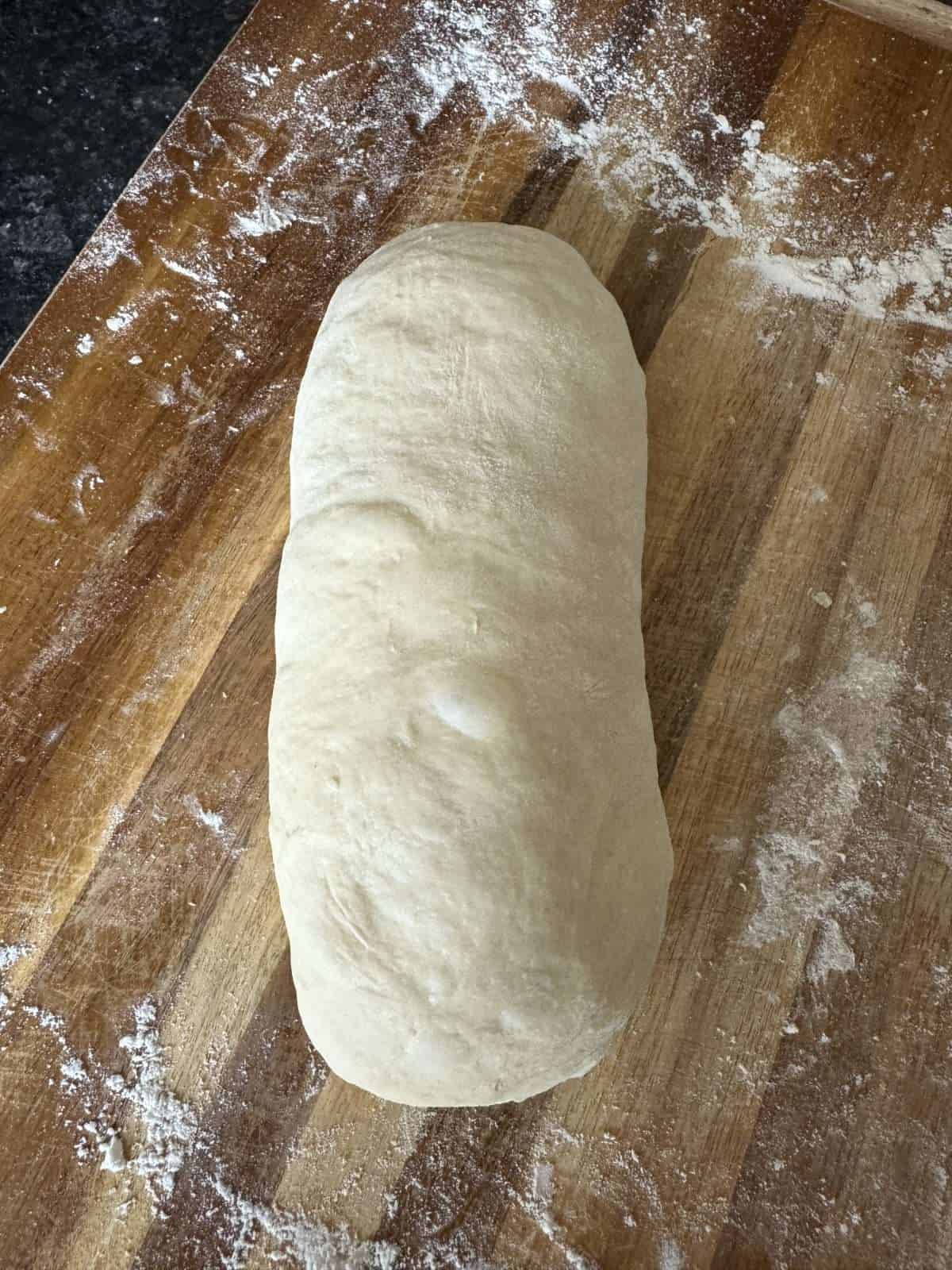
Potato Sandwich Bread Tips & Tricks
- Add some of the potato cooking water into the dough, for extra flavour & moisture!
- Use a digital food probe to take the temperature of the liquid in the dough. I recommend using a Thermapen!
- Mash your potato with a potato ricer, for the smoothest texture.
- Use the windowpane test to assess the gluten development in your dough as you knead it.
- Use a strong white bread flour with a protein content of 13-15%, for optimum gluten development.
- Let your bread cool completely before slicing, to prevent the dough from having a gummy texture.
- Use a sharp serrated knife to cut your bread, for the neatest slices.
Frequently Asked Questions
Potato sandwich bread is best eaten within a day or two but makes amazing toast if it starts to go stale! Make sure to keep your bread in an airtight container or wrapped in clingfilm.
To make sandwich bread, you’ll need to use a strong bread flour with a protein content of 13-15%. I use a Canadian bread flour from Shipton Mill.
Once cooked your sandwich loaf will be well risen & a deep golden brown colour on top. I’d recommend taking the internal temperature of the loaf, using a digital food probe. The temperature of your sandwich loaf should be between 87°c-93°c (190°f-200°f).
I prefer to use dried active yeast for sandwich bread but instant/fast action yeast will work as well. Instant yeast can be added straight into the flour & will make your dough prove slightly quicker.
How To Cook Sandwich Bread In An Aga
With all of my recipes, I include cooking instructions for conventional ovens, fan ovens & also Agas. Here’s how to cook this recipe on an Aga…
Use the boiling plate to cook the potatoes (for the mash). Cook the sandwich loaf on the floor of the baking over, for 40-45 minutes.
Equipment Used
Please note that these are affiliate links & I may make a small commission if you make a purchase using these links, at no extra cost to you. For more information, click here.
More Bread Recipes To Try!
- Tangzhong Dinner Rolls
- Same Day Focaccia
- Potato Burger Buns
- Overnight Tangzhong Doughnuts
- Pizza Oven Pittas
- 100% Biga Potato Pizza Dough
If you have enjoyed this recipe for potato sandwich bread, it would mean a lot if you could leave a review & rating. And if you’d like to stay up to date with future recipes, follow us on Instagram & TikTok!
Potato Sandwich Bread
Equipment
- 9" x 4" Loaf Tin (See Notes)
- Stand Mixer
- Small Saucepan
- Potato Ricer
- Dough Scraper
- Wire Cooling Rack
Ingredients
- 1 Large Floury Potato (Around 150g – See Notes)
- 100 g Potato Water (See Notes)
- 75 g Whole Milk
- 3 g Dried Active Yeast
- 375 g Strong White Bread Flour (See Notes)
- 9 g Fine Sea Salt
- 20 g Caster Sugar
- 1 tsp Skimmed Milk Powder (Optional)
- 1 Large Egg
- 35 g Unsalted Butter (Softened)
Instructions
Potato Prep
- Peel the potato, cut into chunks then place into a small saucepan. Fill the pan with cold water, cover with a lid then set over a high heat.
- Bring the potatoes to the boil then simmer for 5-10 minutes, until tender.Give the potatoes a poke with a fork, to see if they're cooked!
- Once the potatoes are cooked, measure out 100 grams of the potato water & set to one side.
- Pour the potatoes into a colander, leave to steam dry for a couple of minutes then mash them with a potato ricer. Weigh out 100 grams of mash then leave to cool to room temperature.
Dough
- Add the milk to the potato water then warm in a microwave to 38°c/100°f. Whisk in the yeast then leave for 5-10 minutes, to go frothy.
- Next, add the flour into the bowl of a stand mixer along with the salt, sugar, milk powder, egg & the mashed potato.
- Give the activated yeast another whisk then add into the flour.
- Using the dough hook, knead the dough on a medium speed until smooth & starting to come away from the sides of the bowl. This will take around 5 minutes.
- With the mixer still going, add in the butter a small amount at a time, incorporating each piece fully before adding more. Once all the butter has been incorporated, keep mixing until the dough passes the window pane test. This will take another 5-10 minutes.
- Transfer the dough to a lightly oiled bowl, cover with clingfilm or a tea towel & leave to double in size at room temperature. This will take 1-1½ hours.
Shaping
- Grease a 9" x 4" loaf tin with butter (or oil) & set aside.
- Next, knock the dough back then transfer to a lightly floured work surface.
- Using your hands, press the dough into a 1" thick rectangle that's roughly 9" wide & 12" long.Lightly dust the dough with flour if it's sticking to your hands!
- Starting at the end closest to you, roll the dough into a tight sausage. Tuck each end of the dough underneath itself then place into the greased tin, seam side down. Gently press the dough down with your fingertips (this makes the dough rise evenly!).
- Loosely cover the top of the tin with clingfilm then leave to rise at room temperature until the dough has reached the top of the tin. This will take between 45 minutes – 1½ hours.Whilst the dough is proving, preheat an oven to 175°c/155°c fan (350°f/310°f).The dough should just be starting to rise above the top of the tin once its' ready to bake.
Baking
- Bake the bread in the preheated oven for 40-45 minutes, until it is well risen & a deep, golden brown colour on top. If you take the internal temperature of the loaf with a food probe, it should be between 87°c-93°c (190°f-200°f).If the bread starts to colour too much, loosely cover the top with foil.
- Once cooked, let the bread cool in the tin for 20 minutes then transfer to a wire cooling rack & leave to cool completely before slicing.
Notes
Once the potatoes are cooked, you’ll need to set aside 100 grams of the potato cooking water. This adds flavour & moisture to our bread! 5. Yeast – I’d recommend using dried active yeast for this bread but instant/fast action yeast will work as well. Keep in mind that instant yeast can be added straight into the flour & will make your dough prove slightly quicker

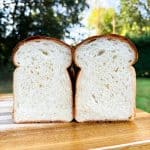
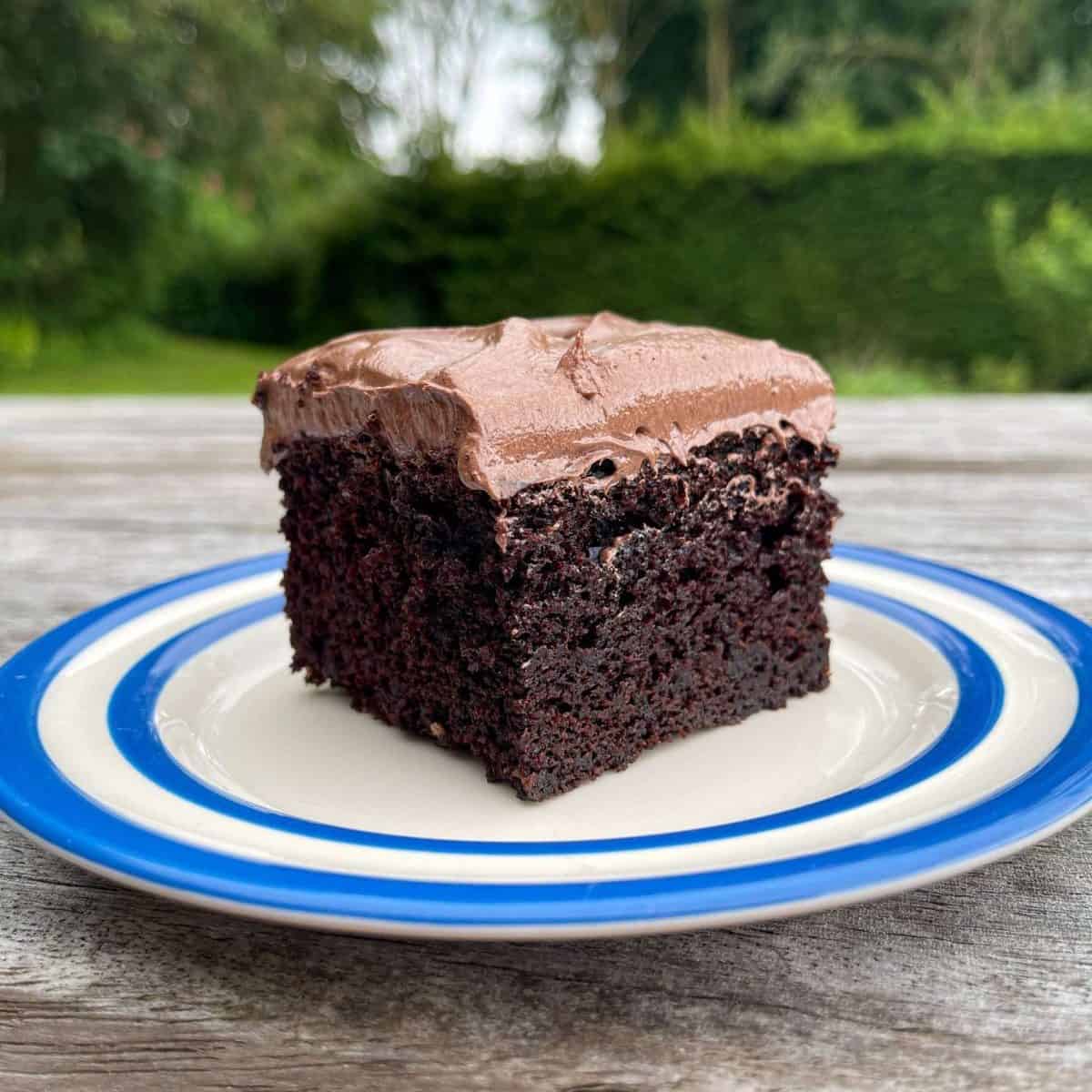
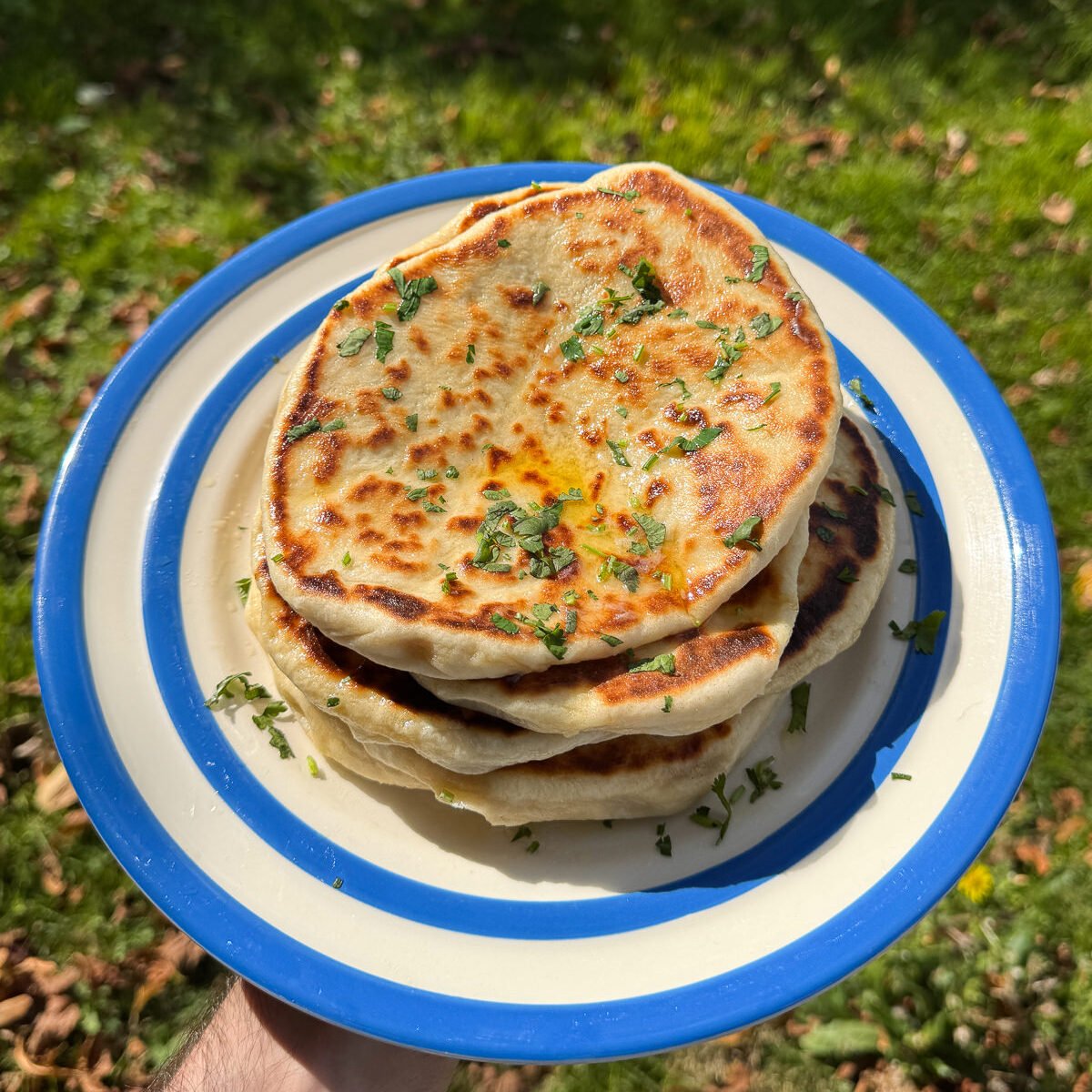

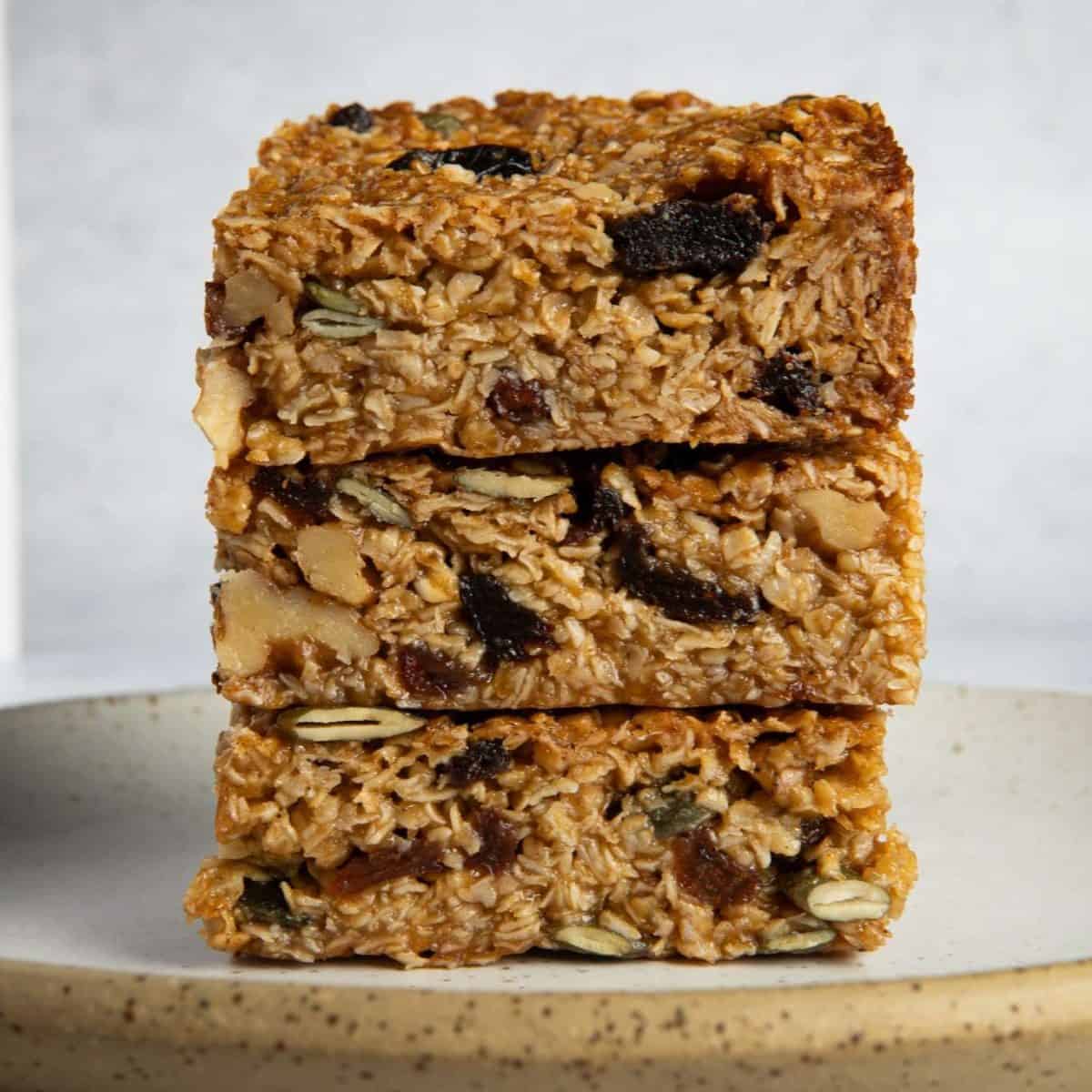
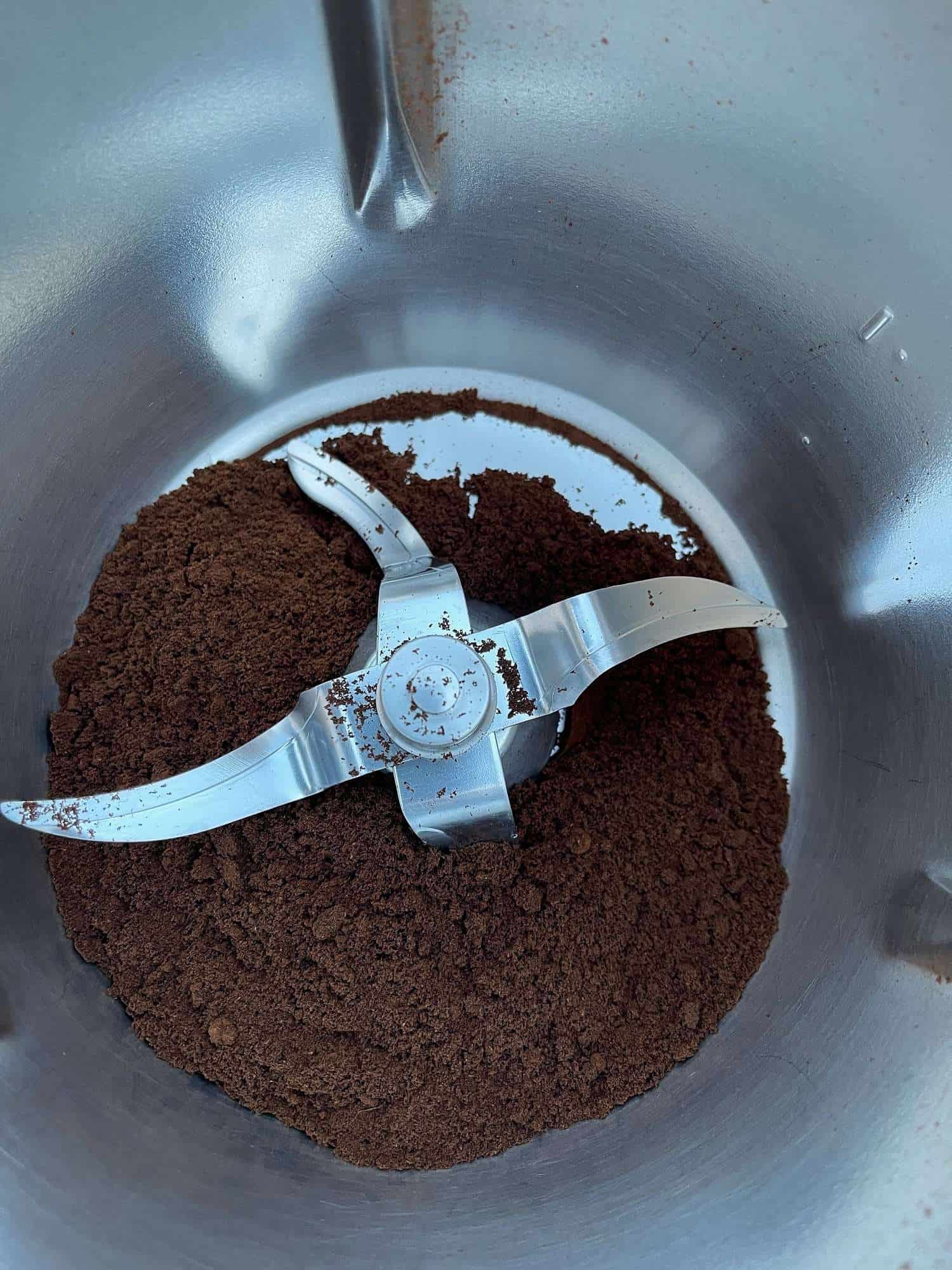
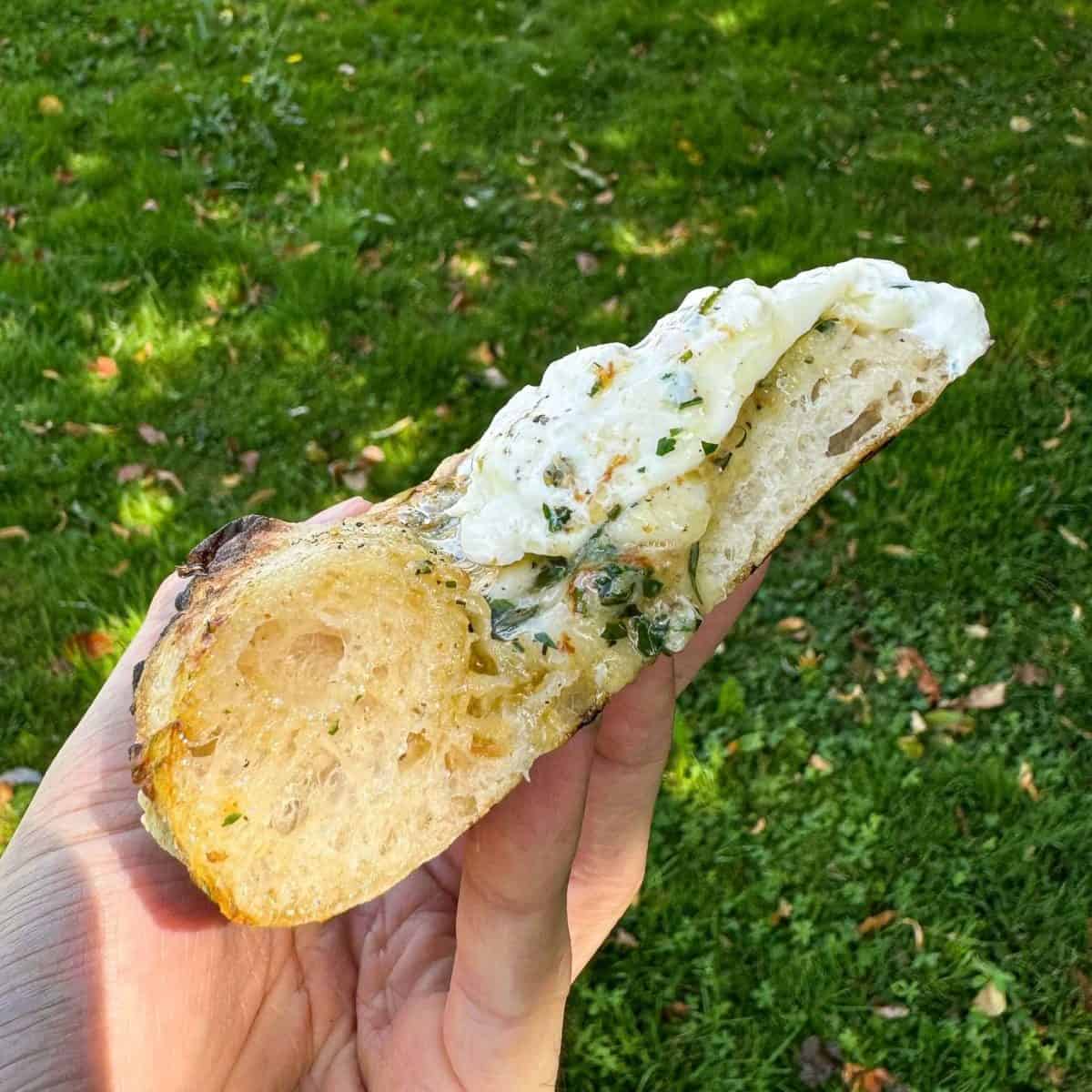
How much Easy Bake (fast action yeast )would you use . Thank you
I’d recommend using the same amount of fast action yeast as dried active (3 grams). The dough might prove slightly quicker with fast action & you won’t need to activate it first.
Is the dough meant to be very sticky or have I used to much liquid ( I used recommended amount ) thank you
The dough shouldn’t be too sticky! Just to confirm, it should be 100g of water (from cooking the potatoes) & 75g of milk to 375g of flour. Do you know what protein content your bread flour has?
A nice way to use some potatoes from my garden! I expected drier dough but it ended up tacky (not sticky) towards the end of mixing – not a problem to make in a stand mixer.
I thought this was for a 2lb loaf tin so I made 1.5x the recipe to fill my 3lb tin. Do not do that, I promise this makes enough dough for a lovely, big loaf! Mine went absolutely bonkers in the oven as a result but aside from making some funny shaped slices, this promises to be a really wonderful bit of bread. Cooling on the counter right now, looking forward to cutting into it first thing tomorrow morning. Thanks for the recipe!
Glad you liked the recipe!
I really did! So much that I’m making it again today 🙂
Where did get that bread pan? It’s not the same as the link.
Hi, the pan from amazon is pretty much the same one that I use! If you’d like the exact same one, it was from a company in the UK called Rackmaster & it’s their bread tin.